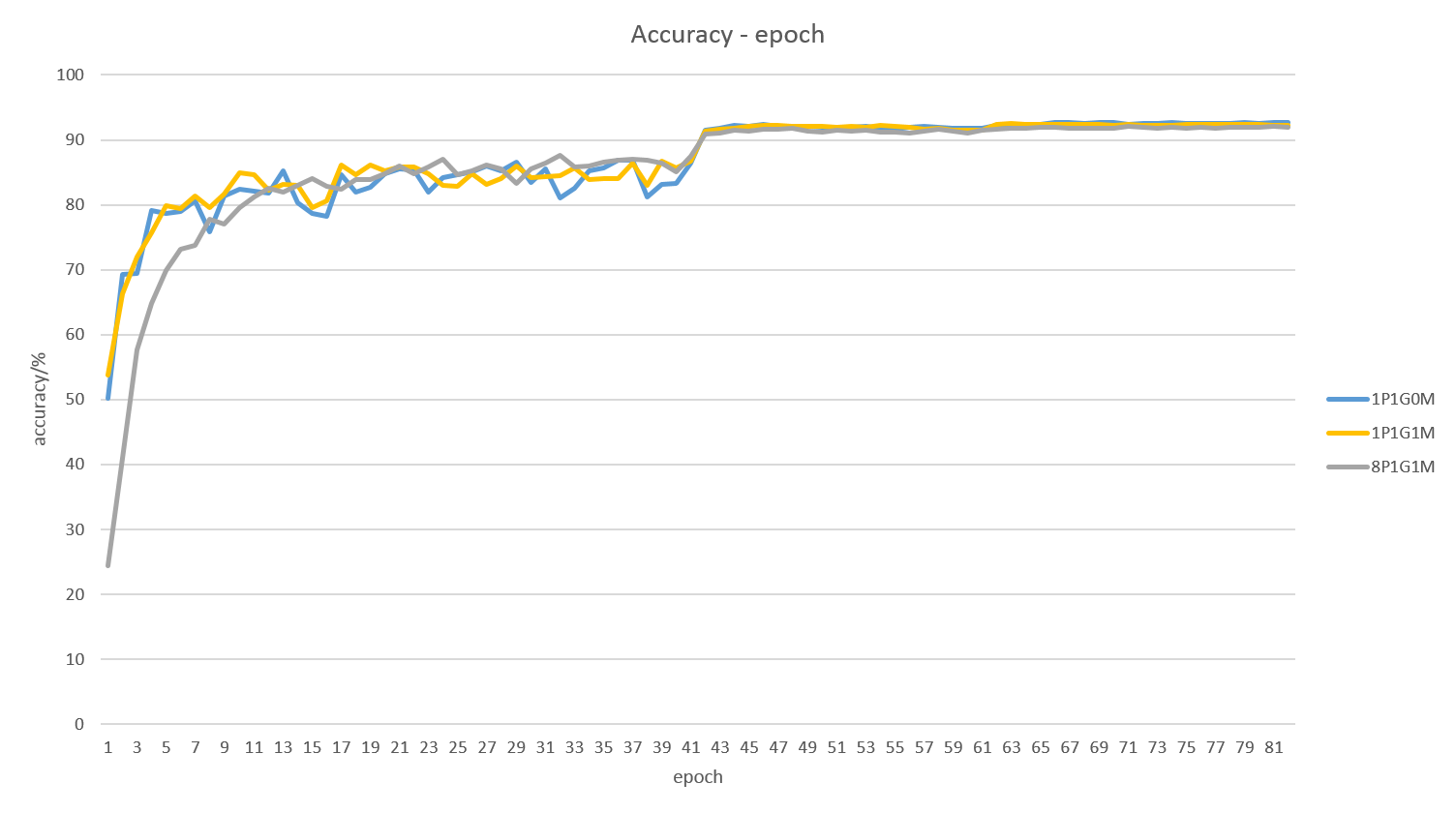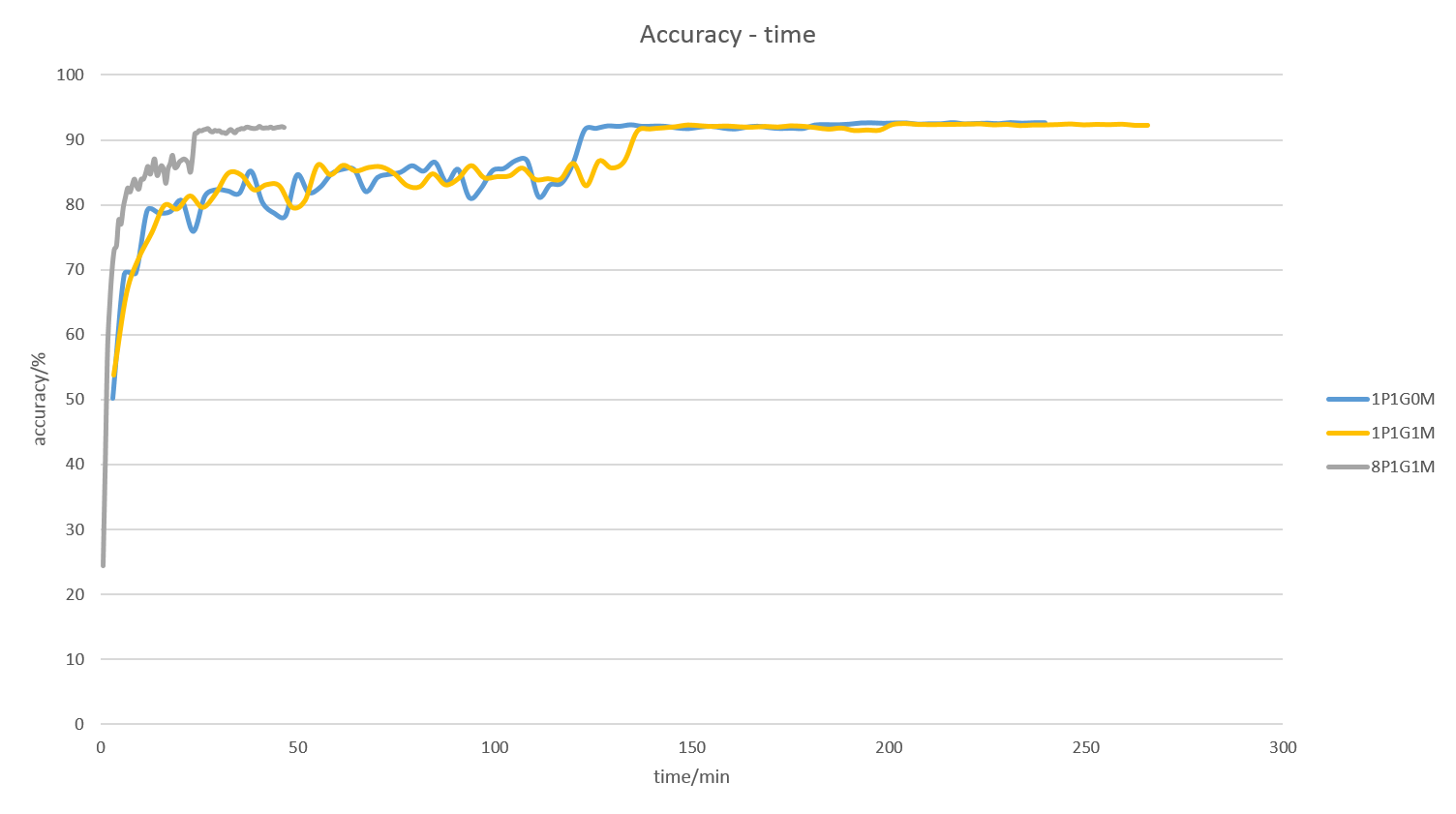This repository has been archived by the owner on Jan 26, 2021. It is now read-only.
-
Notifications
You must be signed in to change notification settings - Fork 222
Multiverso Python Binding Benchmark
you-n-g edited this page Aug 18, 2016
·
5 revisions
Perform CIFAR-10 classification with residual networks implementation based on Lasagne.
Deep_Residual_Learning_CIFAR-10
Please follow this guide to setup your environment.
| Hosts | 1 |
| GPU | Tesla K40m * 8 |
| CPU | Intel(R) Xeon(R) CPU E5-2680 v2 @ 2.80GHz |
| Memory | 251GB |
Configuration of ~/.theanorc
[global]
device = gpu
floatX = float32
[cuda]
root = /usr/local/cuda-7.5/
[lib]
cnmem = 1
| Total epoch | 82 |
| Batch size | 128 |
| Depth | 32 |
| Learning rate change schedule | Initialized as 0.1, Changed to 0.01 from epoch 41, to 0.001 from epoch 61 |
| number of parameters in model | 464,154 |
Clarification
- An epoch represents all the processes divide all the data equally and go through them once together.
- A barrier is used at the end of each epoch.
- This experiment doesn't use warm start in ASGD.
- The time to load the data is not considered in the time of the experiment.
The results of 3 experiments with different configurations are shown as following.
| Short Name | # Process(es) | #GPU(s) per Process | Use multiverso | Batch size | Initial learning rate | Seconds per epoch | Best model validation accuracy |
|---|---|---|---|---|---|---|---|
| 1P1G0M | 1 | 1 | 0 | 128 | 0.1 | 175.4 | 92.69 % |
| 1P1G1M | 1 | 1 | 1 | 128 | 0.1 | 194.4 | 92.53 % |
| 8P1G1M | 8 | 1 | 1 | 64 | 0.05 | 34.1 | 92.11 % |


DMTK
Multiverso
- Overview
- Multiverso setup
- Multiverso document
- Multiverso API document
- Multiverso applications
- Logistic Regression
- Word Embedding
- LightLDA
- Deep Learning
- Multiverso binding
- Run in docker
LightGBM